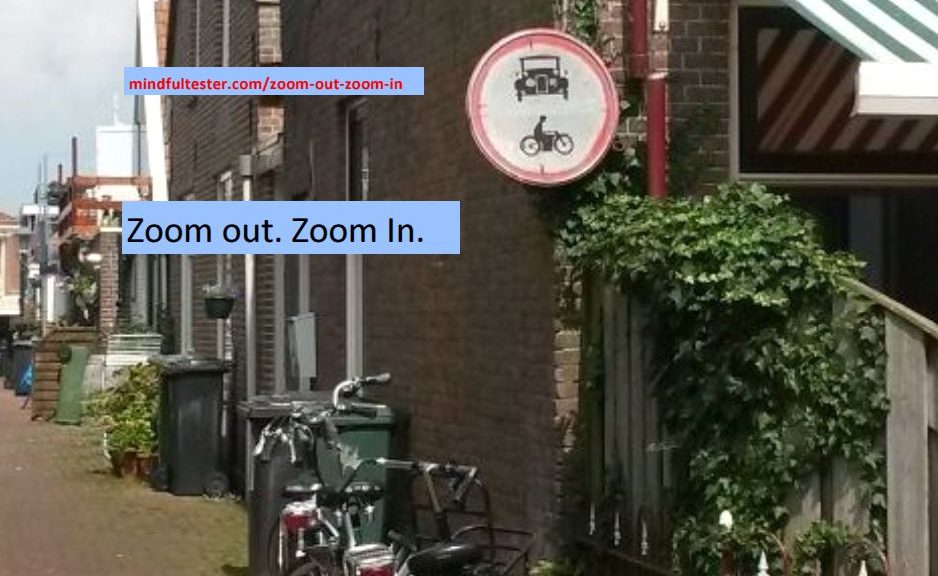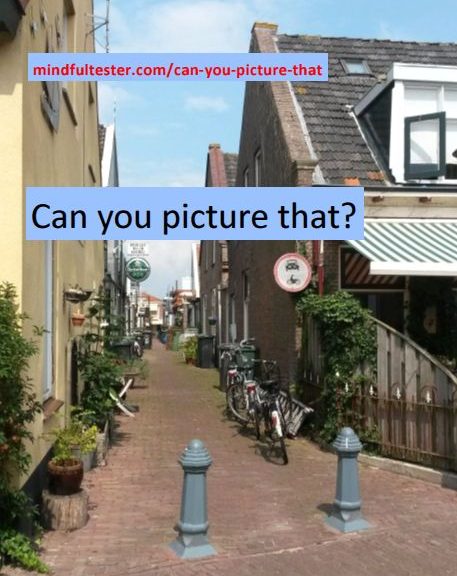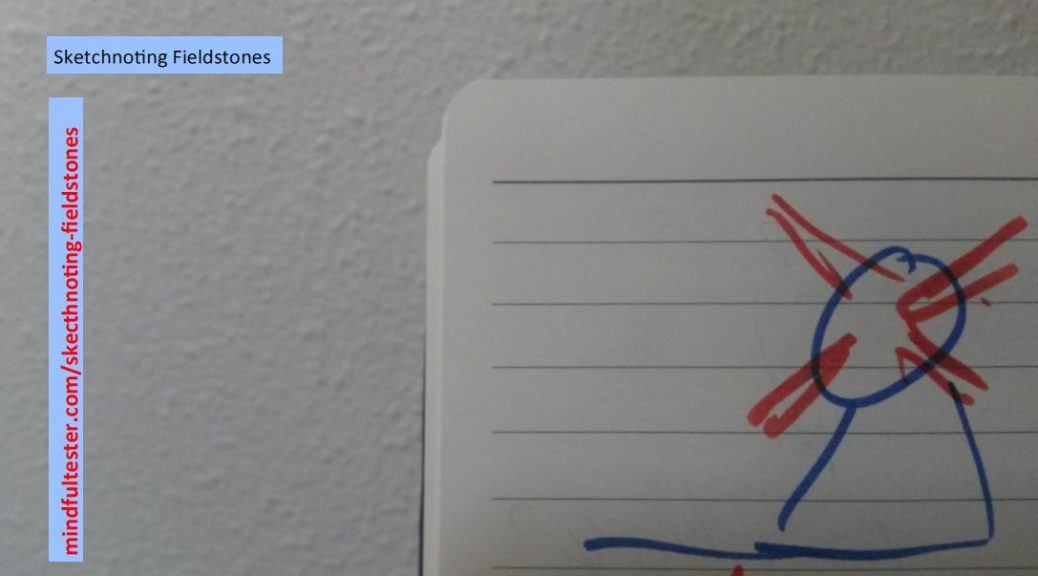On the Kanban board was a sticky showing me what to test.
Zoom out. Zoom in.
The test plan had acceptance criteria for this functionality. I picked the first criterion.
Zoom out. Zoom in.
In the knowledge management system I went to the test department and clicked to the application section. Then I looked for the test case.
Yes, I like to modify my input on the fly. In this case a data file would save me hours of testing.
I could not locate the file.
Zoom out. Zoom in.
I went to the PO or Product Owner. He also started looking:
“Maybe I sent you the file.”
Zoom out. Zoom in.
I went back to my desk. In the mail program I could not find the right file. Then I remembered that this functionality had been covered in one ticket. I found a zip file. This contained other zip files.
Another zoom in. I unpacked a zip file. And repeated this for another contained zip file. I found the data file and expected results.
Zoom out. Zoom in.
I went to the PO to tell him the good news.
Before I went home, I zoomed in in the knowledge management system. I uploaded the found files. The names explained the contents of the files. The next day I would take time to tidy things up.
Zoom out: out of office.
Rat’s Head, Ox’s Neck
Waiting.
I grabbed my notebook with the sketchnotes for my workshop at TestBash Netherlands. In my head I went through all possible visual solutions for a test exercise. I drew the most simple one. At that moment I had no more details to fill in. I almost came to a stop. A workshop in distress?
Centuries ago Musashi Miyamoto had an advice for warriors:
Rat’s Head, Ox’s Neck.
If you are too preoccupied with details, then work on the big picture. If you are too preoccupied with the big picture, then work on the details.
So I switched to my mind maps with the global structure for each hour of the workshop. I moved branches around and clarified thoughts for myself. Another brake was about to stop my flow of thoughts. I could lose valuable information, if I deleted too many branches.
Digital mind maps are easy to save. So I copied the mind maps on my smartphone and set the previous versions on a safe place. What had been bugging my mind? Time to delete some stuff.
One exercise felt out of place in the Second Hour Mind Map. I moved the whole branch to the mind map of the first hour. The number of exercises per hour was almost equal. I love balance.
Then I noticed the theme of the first hour: time out. Wait a minute. That was not a time out exercise. I visualised the exercise: this was about states. I moved the whole branch back. I prefer theme over balance.
The fun with markers is that I can number the branches. So I changed their order a few times. In the meantime no slides were adjusted or removed. I was editing my workshop on a high level at high speed. Look mum. Without presentation program.
In between I switched to the mind map Extra stuff. After opening I hoped to find some Fieldstones I could use in my workshop. But I was disappointed: it was a list of workshop materials I had to take with me.
That was not in the name, so the file was renamed by me. This was an advice from a Cleancode session at my office. And I could add extra stuff like a whiteboard. Sorry, I mean equipment.
Apologies now. I love the smell of smiles in the morning.
Time to switch between the Hour Mind Maps. I did some dry runs in my head. Then I was not ready, because in another mind map I had still some funny pictures to include in the slides.
Luckily I had grouped them around a subtheme. Some pictures I really wanted to use. I reopened the Hour Mind Maps and added branches with funny pictures. There were stories or Fieldstones attached to them.
Another dance of branches in the Hour Mind Maps started. This was creativity at work. Feel the Flow Luke.
I also found my Story Fieldstones Mind Map at last. Some I placed in the Hour Mind Maps. Others went to my sideboard. I also had some floating Fieldstones which I could use at any moment in my workshop.
I heard my name mentioned in the hallway. My wait was over. Within 1 hour I had reshaped my workshop. The next time I could work on my slides again.
I had seriously enjoyed myself. :)
Thanks for reading.
Yours Mindfully.


